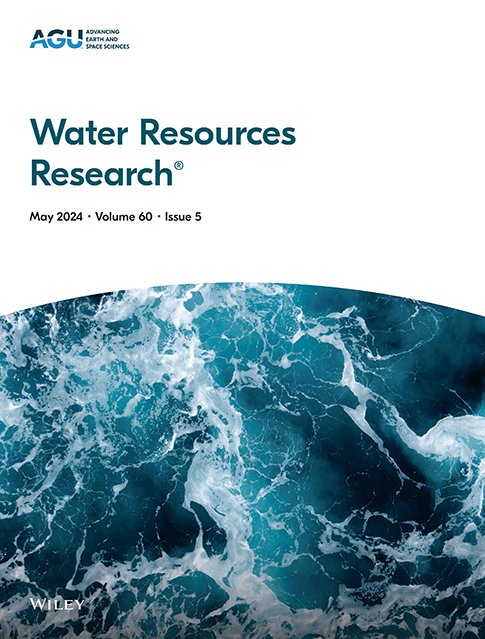卫星采样条件下河流流量空间水文特征及其峰值事件检测分析
IF 4.6
1区 地球科学
Q2 ENVIRONMENTAL SCIENCES
引用次数: 0
摘要
长期以来,河流动力学的研究依赖于传统的原位水文分析。这种在给定地点的时间变化的图形表示是如此普遍,以至于“水线图”这个术语被广泛认为是一个时间序列。虽然这种“时间水文图”非常适合于现场数据分析,但它不能代表给定时间内跨空间的水文变异性;以卫星为基础的水文观测的特点。在这里,我们认为“空间水线”的概念应该成为其自身专门审查的焦点。我们建立了河流流量的“空间序列”,并在峰值流量事件检测的背景下对其进行了分析。我们建议使用峰值事件空间覆盖,称为“长度”,作为事件持续时间的模拟。我们的分析是在密西西比盆地使用密集的原位网络进行的。我们发现,沿流域最大的河流,峰值流事件的长度范围在75至1800公里之间,中位数(平均)值为330(520)公里。我们的分析还表明,空间采样的分辨率需要比峰值流长度精细4(2)倍,才能检测到81%±13%(70%±20%)的事件,并在84%±3%(67%±12%)的中位精度范围内估计它们的长度。我们评估了峰值流量的时空尺度之间的联系,并表明持续时间较长的事件也会影响更大的范围。最后,我们讨论了对卫星任务设计的影响,这些任务涉及捕捉跨越空间的洪水。本文章由计算机程序翻译,如有差异,请以英文原文为准。
Spatial Hydrographs of River Flow and Their Analysis for Peak Event Detection in the Context of Satellite Sampling
The study of river dynamics has long relied on the analysis of traditional in situ hydrographs. This graphical representation of temporal variability at a given location is so ubiquitous that the mere term “hydrograph” is widely recognized as a time series. While such a “temporal hydrograph” is well suited for in situ data analysis, it fails to represent hydrologic variability across space at a given time; a perspective that characterizes satellite-based hydrologic observations. Here we argue that the concept of “spatial hydrograph” should be the focus of its own dedicated scrutiny. We build “space series” of river discharge and present their analysis in the context of peak flow event detection. We propose the use of peak event spatial coverage, referred to as “length”, as an analog to event duration. Our analysis is performed in the Mississippi basin using a dense in situ network. We reveal that peak flow events range in length from around 75 to 1,800 km with a median (mean) value of 330 (520) km along the basin's largest rivers. Our analysis also suggests that spatial sampling needs to be a factor of 4 (2) finer in resolution than peak flow lengths to detect 81% ± 13% (70% ± 20%) of events and to estimate their length within 84% ± 3% (67% ± 12%) median accuracy. We evaluate the connection between temporal and spatial scales of peak flows and show that events with longer durations also affect larger extents. We finally discuss the implications for the design of satellite missions concerned with capturing floods across space.
求助全文
通过发布文献求助,成功后即可免费获取论文全文。
去求助
来源期刊

Water Resources Research
环境科学-湖沼学
CiteScore
8.80
自引率
13.00%
发文量
599
审稿时长
3.5 months
期刊介绍:
Water Resources Research (WRR) is an interdisciplinary journal that focuses on hydrology and water resources. It publishes original research in the natural and social sciences of water. It emphasizes the role of water in the Earth system, including physical, chemical, biological, and ecological processes in water resources research and management, including social, policy, and public health implications. It encompasses observational, experimental, theoretical, analytical, numerical, and data-driven approaches that advance the science of water and its management. Submissions are evaluated for their novelty, accuracy, significance, and broader implications of the findings.
 求助内容:
求助内容: 应助结果提醒方式:
应助结果提醒方式:


